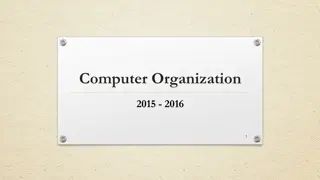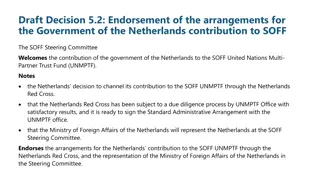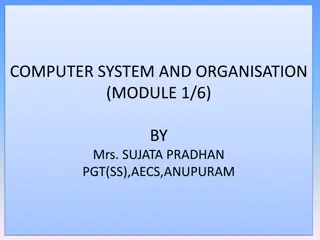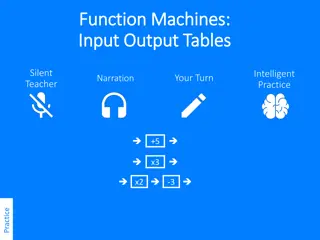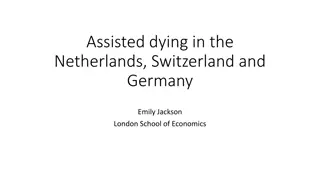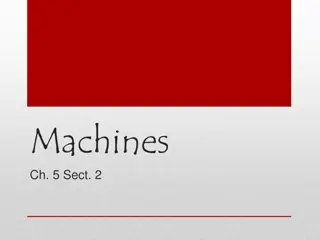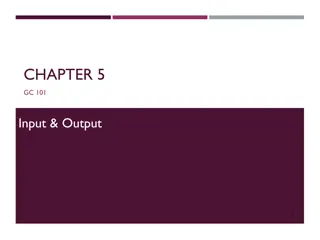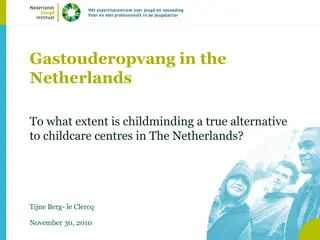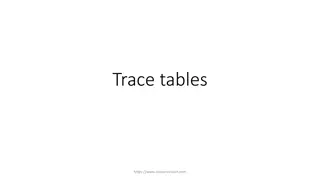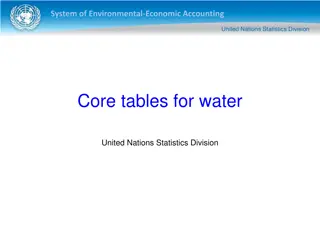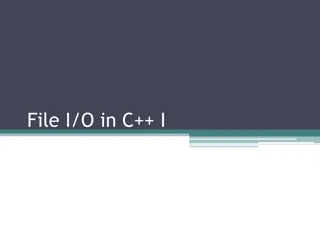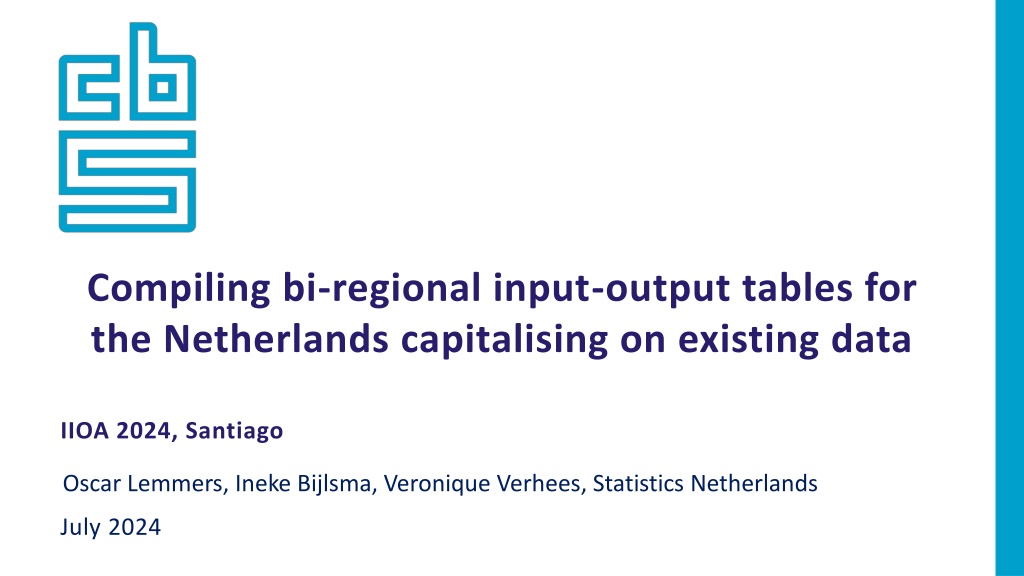
Bi-Regional Input-Output Tables for Netherlands
Capitalizing on existing data, this project compiles bi-regional input-output tables for the Netherlands to provide detailed regional information essential for policy-making. Explore the methods, results, and the significance of understanding regional linkages in this insightful study.
Download Presentation

Please find below an Image/Link to download the presentation.
The content on the website is provided AS IS for your information and personal use only. It may not be sold, licensed, or shared on other websites without obtaining consent from the author. If you encounter any issues during the download, it is possible that the publisher has removed the file from their server.
You are allowed to download the files provided on this website for personal or commercial use, subject to the condition that they are used lawfully. All files are the property of their respective owners.
The content on the website is provided AS IS for your information and personal use only. It may not be sold, licensed, or shared on other websites without obtaining consent from the author.
E N D
Presentation Transcript
Compiling bi-regional input-output tables for the Netherlands capitalising on existing data IIOA 2024, Santiago Oscar Lemmers, Ineke Bijlsma, Veronique Verhees, Statistics Netherlands July 2024
Outline - Why regional information, why a pilot? - Methods and data - Results - Experiences and conclusions 2
Why regional information? Dutch policy makers ask for regional information, e.g.,: - Dependencies on foreign countries, direct/indirect - Effect of investment policies on the region and the rest of the country (a.o., circular and energy transition) - Linkages in the own region (a.o., inclusiveness) Linkages obscure the picture. E.g., a regional car manufacturer hardly imports, but it buys much from a metal manufacturer in another region that imports many raw materials. Hence the car manufacturer is still (indirectly) dependent on foreign countries. 3
Everything is connected! The statistical way to map this: bi-regional input-output tables, showing how much industry A in region X sells its output which is input of industry B in region X or Y, consumers in X or Y, government in X or Y and so on 4
A simplified bi-regional input-output table Example: services in Amsterdam sells 10 to manufacturing in Rest of Netherlands 5
Why a pilot? - - Data of Statistics Netherlands is old: before 2000 Thissen et al. (2018) compile data for EU regions, 2000-2010, 63 industries and 12 Dutch regions Huang & Koutroumpis (2023) compile data for EU regions, 2018, but only 10 industries - Statistics Netherlands thought it could provide more regional detail, more recent data, by using existing (micro)data Pilot: cost-effective way to see where one runs into problems. 6
General approach 1. Compile regional supply and use tables: in each region, show by product who is supplying it (industries, imports) and who is using it (industries, consumers, government, gross fixed capital formation, exports) 2. Connect supply and use to see which supplier in which region sells which product to which user in which region, using trade and transport data (similar to compiling a regular input-output table) 8
Derive regional supply & use tables Assume that regional supply and use of products by industry is the same as national supply and use of products by industry (given an industry, each region has the same production structure) Result: regional supply & use tables, for 53 regions we have this region and Rest of Netherlands, 64 industries, 25 types of goods and 116 types of services 9
Data: detailed national and regional macrodata National Accounts: - about 400 products (goods and services), who supplies them (135 industries, imports), who uses them (industries, households, government, gross fixed capital formation, exports) Regional Accounts: - For 135 industries in 53 regions: value of production; there is no product level 10
Origin and destination of use and supply Trade data: by product by region, what is origin and destination (own region, rest of Netherlands, overseas) Patch supply, use and trade. Result: by product, by region, how much is incoming/outgoing, from/to own region, Rest of Netherland, abroad. In other words: all linkages, at product level. 11
Data: bi-regional trade & transport data (goods) Combine data from international trade, regional transport, supply and use, regional accounts, cf. Lankhuizen et al. (2020) Existing dataset: for 53 regions, for 25 products, trade and transport flows within own region, with Rest of Netherlands, with abroad 12
Data: detailed international trade data (services) Combining trade in services by enterprise, regional distribution of enterprises, assumption that an enterprise in an industry trades in its typical services Result: for 53 regions, for 116 services, trade with abroad Missing: trade within own region, trade with Rest of Netherlands. We distinguished between local services and national services and used proportionality assumptions 13
Aggregate product detail away Result: given a region X, how much does industry A supply to - Each industry in region X - Each industry in Rest of Netherlands - Households in region X of Rest of Netherlands - Government in Region X or Rest of Netherlands - - Foreign countries (exports) In other words: a bi-regional input-output table 14
Regional microdata/final use macrodata - Which products (goods and services) produces each enterprise where (difficult with multiple branches) - Which products is each enterprise using where - Consumption by household & government, gross fixed capital formation, at product level, by region We used crude estimates that can be improved 16
Results 17
Results (I): regional-global linkages - output How dependent is a region on foreign demand, via its exports (direct dependence) and its supplies to domestic exporters (indirect)? 18
Results (II): regional-global linkages - input Multiplier effects, relevant for, e.g., subsidies: how much will leak abroad? 19
Results (III): inter-regional linkages Multiplier effects, relevant for, e.g., Dutch Growth Fund: what does a regional investment yield for the rest of the country? 20
Experiences - The regional import, export and transit data is very useful - Still some balancing necessary - Not easy: link trade & transport margins of re-export to region - Big problem: intra- and inter-regional trade in services - Stepwise approach (first version regional tables used only trade in services, second version also trade in goods) showed: for some regions adding goods detail does not change the table too much (Vlieger, 2023) 22
Conclusion - High demand for regional linkages related to, e.g., dependence on foreign countries, investment policies, circular & energy transition - Much possible already with existing national information - Common problem: get access to information at other institutes (Dutch solution: very strong Statistical Law) - Intra- and interregional trade in goods: doable with data - Big problem: intra- and inter-regional trade in services 23
Thank you for your attention! Questions if time & agenda permit Or later via o.lemmers@cbs.nl, i.bijlsma@cbs.nl, vce.verhees@cbs.nl 24





